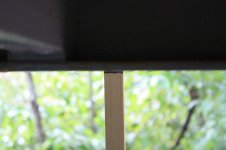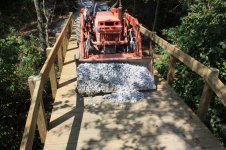The 1/8 inch deflection is not what I was concerned about. Remember the Oakland Bridge in California that was closed this weekend? Did you see the Dog Bone Link that cracked at the Eye? That crack was the result of stress-concentration as opposed to average stress. That type of crack starts at the inside of the hole [a point of discontinuity] that the link-pin secures and works its way outward.[ first discussed in 1864 by Barre de Saint-Venant] Now that bridge and its components are many times stronger than it has to be [safety factor] and that link could have completely failed, other links in the catenaries would have safely taken up the extra load. Drill holes in the wrong place and you setup a very local overload that will fail some day. I could bore you for hours with the details of Mores Circle, Dynamic and repeated loading, etc.
Bottom line is, Buggyman ends up in the ditch crushed with the tractor on him.
PS, not kidding.




